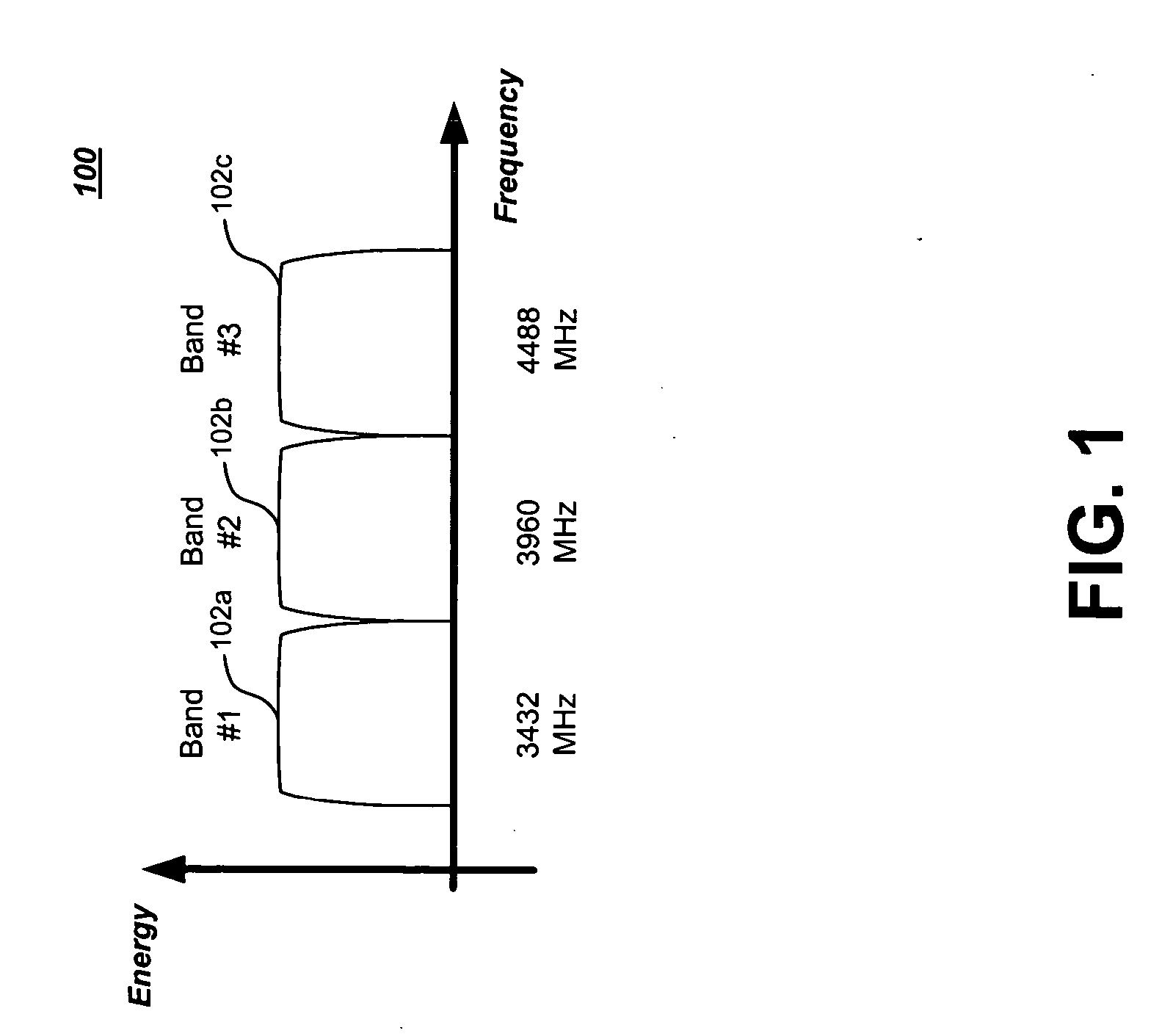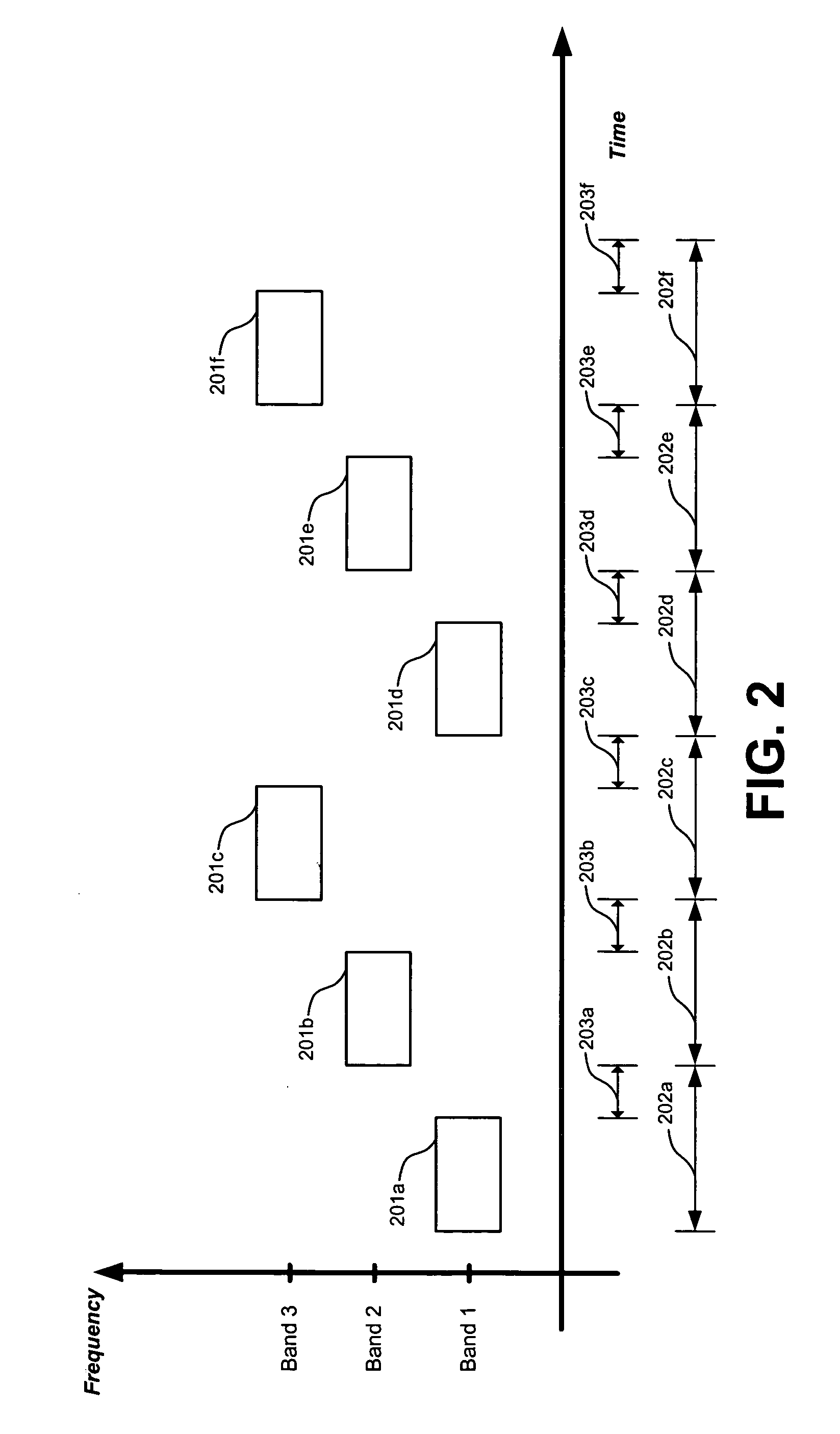Synchronization of time-frequency codes
a time-frequency code and synchronization technology, applied in the field of wireless communication, can solve the problems of collisions between different codes, multiple simultaneous operation of piconets (sops), and cannot be guaranteed, and achieve the effect of reducing (or even eliminating) the number of collisions between transmissions
- Summary
- Abstract
- Description
- Claims
- Application Information
AI Technical Summary
Benefits of technology
Problems solved by technology
Method used
Image
Examples
Embodiment Construction
I. Frequency Hopping
[0027]FIG. 1 is a diagram of an available spectrum 100 for a short-range communications system in which the principles of the present invention may be applied, such as an IEEE 802.15.3a network. As shown in FIG. 1, this spectrum includes three frequency bands 102. In particular, spectrum 100 includes a first band 102a centered at 3432 MHz, a second band 102b centered at 3960 MHz, and a third band 102c centered at 4488 MHz.
[0028] According to MBO, bands 102 may be used as hopping channels. When used in this manner, each symbol (e.g., each OFDM symbol) is transmitted in one of bands 102 according to a pre-defined code. In IEEE 802.15.3a, such a code is referred to as a time frequency code (TFC). This technique provides for frequency diversity, as well as robustness against multi-path propagation and interference. In addition, this technique allows for multiple-access by utilizing different TFCs for adjacent piconets.
[0029] An example of this frequency-hopping tec...
PUM
 Login to View More
Login to View More Abstract
Description
Claims
Application Information
 Login to View More
Login to View More - R&D
- Intellectual Property
- Life Sciences
- Materials
- Tech Scout
- Unparalleled Data Quality
- Higher Quality Content
- 60% Fewer Hallucinations
Browse by: Latest US Patents, China's latest patents, Technical Efficacy Thesaurus, Application Domain, Technology Topic, Popular Technical Reports.
© 2025 PatSnap. All rights reserved.Legal|Privacy policy|Modern Slavery Act Transparency Statement|Sitemap|About US| Contact US: help@patsnap.com



